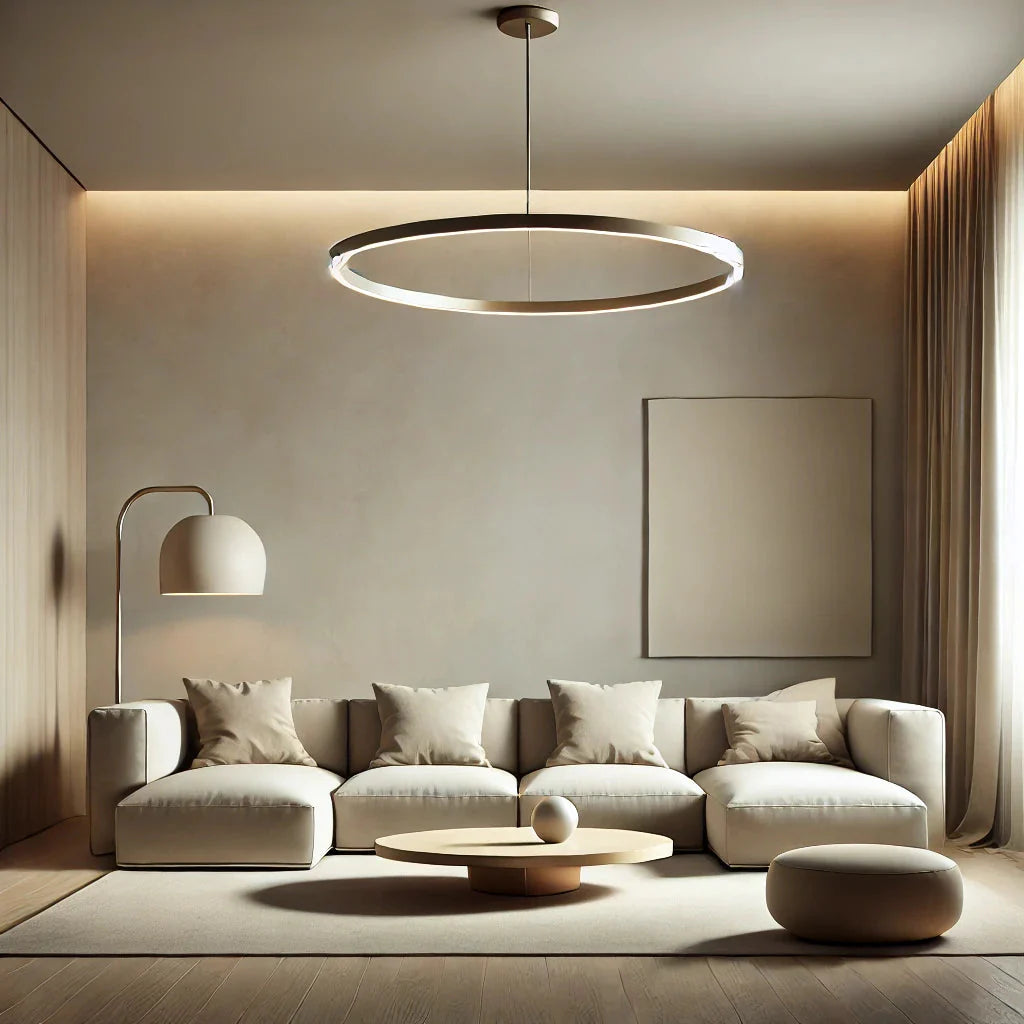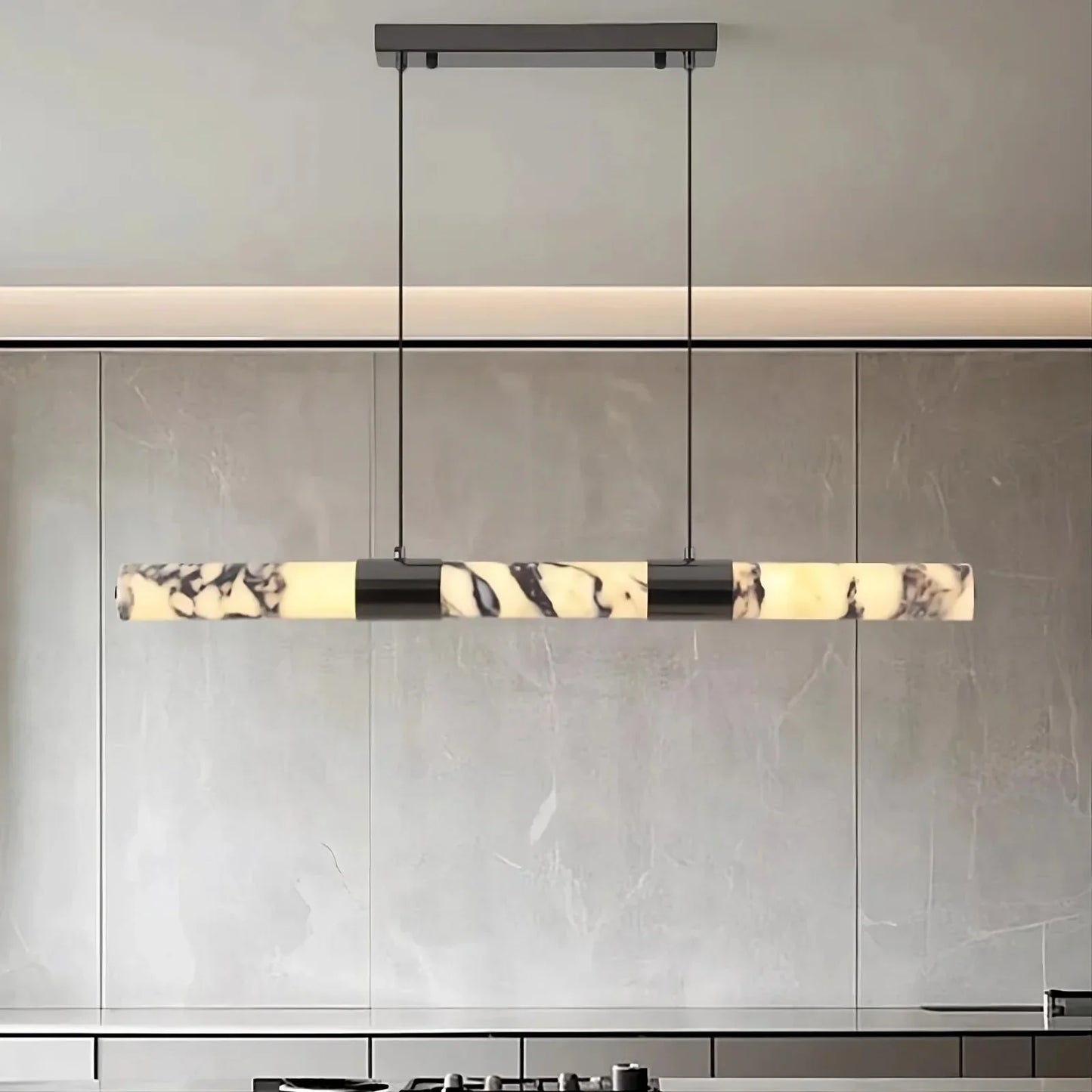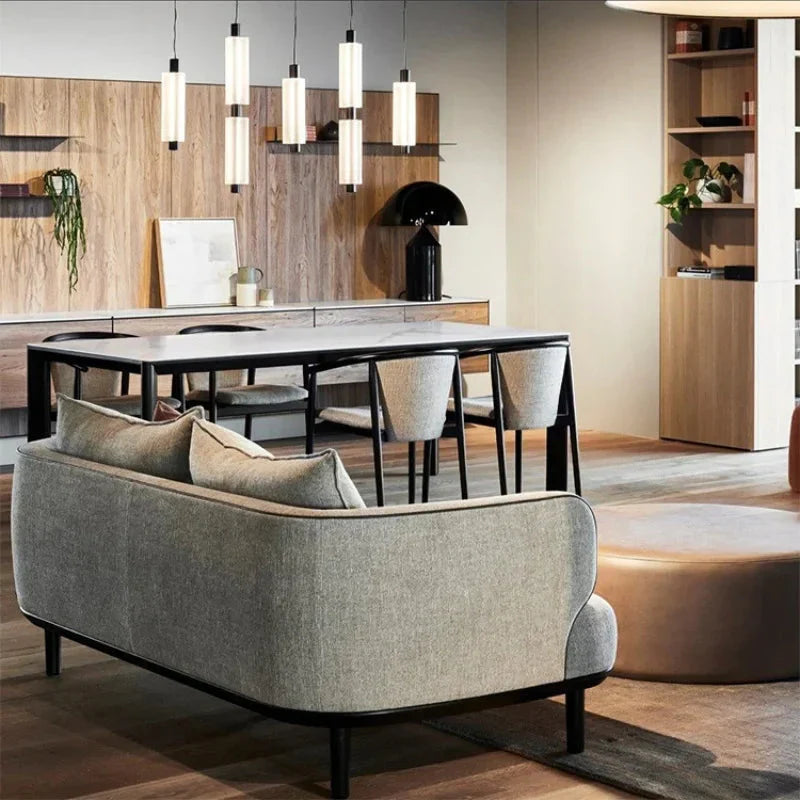Proper lighting is one of the most critical elements in any space. Not only does it set the mood, but it can also make a room feel more open, warm, and inviting. Yet, one aspect of lighting that often gets overlooked is size. Selecting the right size light fixture, whether it’s dining room chandeliers, kitchen ceiling lights, or pendant lighting over a kitchen island, can make or break the aesthetic of a room. In this guide, we will dive into how to choose the perfect size for your lighting fixtures in each room, ensuring a balance between style, function, and proportion.
Choosing the Size of a Light Fixture
When choosing the size of a light fixture, it’s essential to consider the room's size, ceiling height, and furniture layout. The general rule of thumb is to focus on scale and balance. A fixture that’s too large may overwhelm the room, while one that’s too small might not make the desired impact. Here's how to get started:
- Measure the Room: Add the room’s length and width in feet. Convert that number into inches, and that’s the approximate diameter of the fixture you should consider. For example, if your room is 12x14 feet, you would aim for a fixture that is roughly 26 inches in diameter.
- Ceiling Height Matters: A light fixture should hang around 7 feet above the floor in rooms with standard 8-foot ceilings. For rooms with higher ceilings, add 3 inches for each extra foot of ceiling height. This guideline ensures enough headspace and aesthetic balance.
Chandeliers and Their Place in the Home
Chandeliers have long been associated with grandeur and elegance. However, modern chandeliers come in a wide range of designs, making them suitable for various rooms and styles. When choosing the right chandelier for your home, it’s essential to consider its size carefully.
In spaces like the living or dining room, chandeliers act as statement pieces. If you’re looking for a dining room chandelier, the fixture should be at least half the width of the table it will hang over. For instance, if your dining table is 60 inches wide, opt for a chandelier that is 30 inches wide. To avoid overpowering the space, the chandelier should be proportional to both the table and the room size.
For hanging height, the bottom of the chandelier should hang about 30-34 inches above the dining table. This provides ample lighting without obstructing views or conversations.

Ceiling Lights: Functional and Stylish
Ceiling lights serve a dual purpose in most rooms—they provide ambient lighting and contribute to the overall aesthetic. From bedrooms to hallways, ceiling light fixtures come in a variety of shapes and sizes, and selecting the correct one can transform the room.
Living Room Ceiling Lights
The living room often benefits from larger light fixtures that complement the room’s size and furniture arrangement. For this, consider using a modern chandelier or a large ceiling light fixture. If the ceiling is low, you might want to opt for flush mount ceiling lights. If the ceiling height is over 8 feet, you can consider semi-flush ceiling lights to add a decorative touch while keeping the proportions balanced.
In rooms that feature an open floor plan, the light fixture should reflect the scale of the room. You can use layered lighting by incorporating ceiling lights, floor lamps, and wall sconces to achieve a cohesive and dynamic look.
Bedroom Ceiling Lights
When choosing ceiling lights for the bedroom, focus on creating a soothing atmosphere. A medium-sized fixture works well if the room isn't too large. For rooms with higher ceilings, you may even choose a mini chandelier to bring in a touch of elegance. However, ensure that the fixture complements other light sources like bedside lamps to offer both task and ambient lighting.
Pendant Lighting for Targeted Illumination
Pendant lighting has gained popularity in recent years due to its versatility and stylish appeal. It’s ideal for areas that require targeted illumination, such as kitchen islands, dining areas, or entryways.
Kitchen Island Light Fixture
When choosing a kitchen island light fixture, size and placement are everything. Most kitchen islands are between 4 to 7 feet long, meaning you’ll need two or three pendant lights spaced evenly across the length of the island. For islands that are 6 feet or longer, consider using three pendants. The pendants should hang 30-36 inches above the island’s surface to provide adequate lighting for tasks like cooking or dining.
Pendant lights should also align with the style of your kitchen. Sleek, modern chandeliers or industrial-style pendants are a great match for contemporary kitchens, while more ornate pendants might suit traditional spaces.
Entryway Pendant Lighting
First impressions are everything, and your entryway is no exception. Pendant lighting in this area can set the tone for the entire home. Choose a larger pendant light or chandelier if the entryway is grand and open. For smaller entryways, opt for a single statement pendant or a smaller ceiling fixture. It’s important to consider both the height and scale of your entryway. Pendants should hang 7 feet above the floor in a standard-height entryway, or higher for vaulted ceilings.
Dining Room Chandeliers: The Centerpiece of the Room
Dining room chandeliers are often the focal point of the room. Whether you choose a traditional crystal chandelier or a modern chandelier, the size and height are crucial in creating an inviting and functional space.
- Chandelier Width: As mentioned earlier, your chandelier should be about half the width of your dining table. This ensures that it doesn’t look too small or too overwhelming. For a more dramatic effect, you can go a bit larger, but balance is key.
- Hanging Height: The chandelier should hang 30-34 inches above the table for an 8-foot ceiling. If your ceiling is higher than 8 feet, increase the height by 3 inches for each additional foot of ceiling height.
When it comes to style, modern chandeliers can offer sleek, minimalist designs that complement contemporary dining room decor, while more elaborate chandeliers work well in traditional or formal dining spaces.
Kitchen Ceiling Lights: Task and Ambient Lighting
In the kitchen, lighting serves a dual purpose—providing both functional task lighting and general ambient light. A combination of kitchen ceiling lights and under-cabinet lighting can ensure a well-lit space.
For kitchen areas that serve as both workspaces and gathering spots, like a kitchen island, the lighting fixture should offer both form and function. Consider a row of pendant lights or a single large statement pendant to provide adequate light while also enhancing the kitchen's design.
Flush Mount and Semi-Flush Ceiling Lights for Kitchens
For kitchens with low ceilings, flush mount ceiling lights are often the best choice. They provide even, broad illumination without occupying too much vertical space. Semi-flush mount lights can add a bit more flair and depth, especially in kitchens with higher ceilings.
If your kitchen features a more modern design, opt for sleek, geometric light fixtures that offer both practicality and aesthetic appeal.
Choosing Light Fixtures for Bathrooms
Bathrooms require a thoughtful balance between task and ambient lighting. Ceiling lights, vanity lights, and even pendant lighting can all play a role in ensuring the space is well-lit.
In smaller bathrooms, a single ceiling light fixture might suffice. However, in larger spaces, you might need multiple fixtures, including vanity lights and recessed lighting. For bathrooms with higher ceilings, you can even consider a mini chandelier to add a touch of luxury.
Ensure that all fixtures are moisture-rated for bathroom use to prevent any issues with humidity and water exposure.
FAQs
How do I choose the right size light fixture for a room?
Start by measuring the room. Add the room's length and width in feet and convert that number to inches. This is the ideal diameter for the light fixture.
What size chandelier should I hang over my dining table?
A chandelier should be about half the width of your dining table. For a 60-inch table, choose a chandelier around 30 inches wide.
How far should pendant lights hang over a kitchen island?
Pendant lights should hang 30-36 inches above the kitchen island for optimal lighting and space.
What are the best ceiling lights for low ceilings?
Flush mount ceiling lights are ideal for low ceilings, providing broad illumination without taking up too much vertical space.
Can I use pendant lighting in the bathroom?
Yes, but ensure the fixture is moisture-rated. Pendants can add a stylish touch to larger bathrooms.
What is the rule for hanging a chandelier in an entryway?
Chandeliers or pendant lights in an entryway should hang 7 feet above the floor for a standard-height ceiling.
Conclusion
Choosing the correct size of light fixture is essential for both functionality and style. Whether you’re installing a dining room chandelier, kitchen ceiling lights, or pendant lights over an island, ensuring the fixture complements the room’s size and design is key. By following the guidelines on size, scale, and placement, you can achieve a beautifully lit, balanced space.





